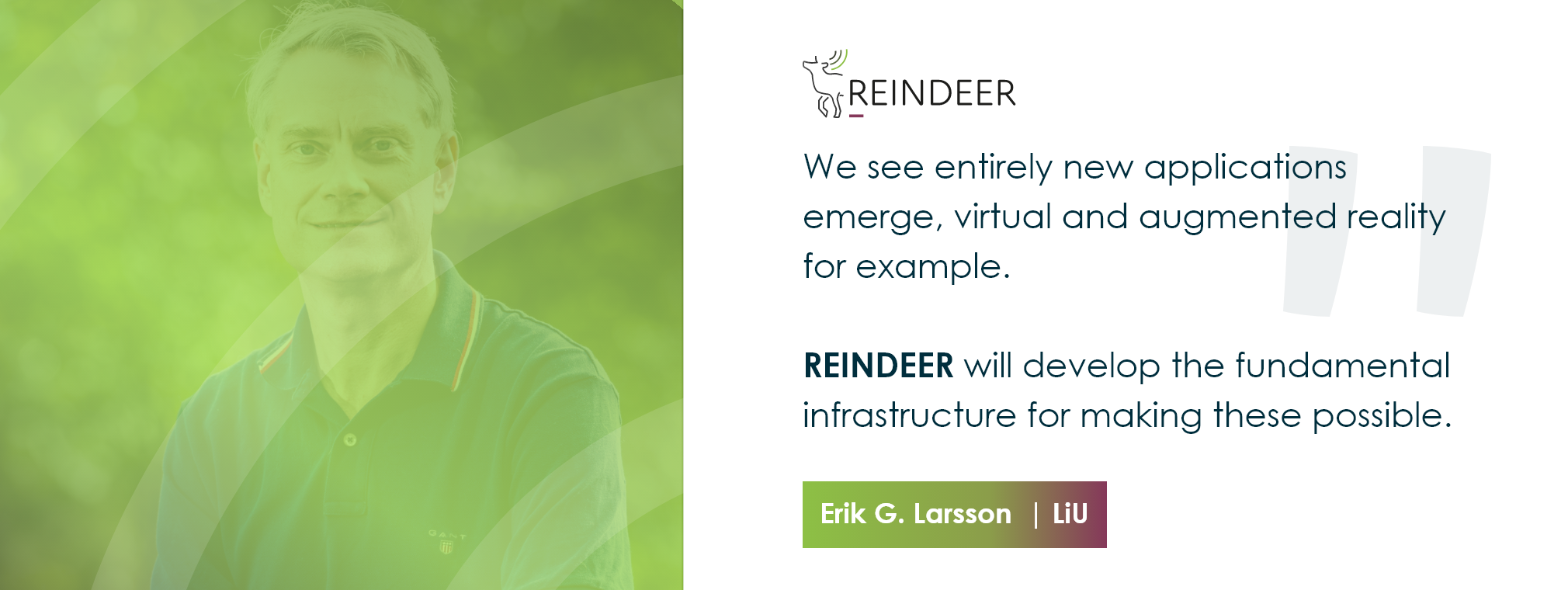Today in a talk with Erik G. Larsson from Linköping University (LiU) – 5 questions about himself and the REINDEER H2020 project
Introduce yourself and tell us a bit about your background.
My name is Erik G. Larsson and I am a Professor at Linköping University (LiU) in Sweden and I am an IEEE Fellow.
I have co-authored some 160 journal papers on wireless communications and signal processing, and I am the co-inventor of many patents. I am co-author of the two Cambridge University Press textbooks Space-Time Block Coding for Wireless Communications (2003)
and Fundamentals of Massive MIMO (2016).
What is your title and/or role in the project?
I am the principal investigator from LiU in the REINDEER project. Within the project LiU is the lead of WP3 “Scalable Protocols and algorithms for robust cell-free operation”.
What are your contributions to the project? (Specify what tasks you are responsible for)
We will work on the algorithms and architectures for intelligent surfaces.
LIU will lead WP3 on the design of reliable communication and positioning algorithms and contribute by analysis and definition of models and metrics, physical-layer concept development, algorithmic development for spatial resource allocation, signal processing, initial access, information broadcasting, and backscattering communication.
LIU will also contribute to all other WPs.
The LIU team will utilize its well-read blog “Massive MiMO”, the podcast “Wireless Future” on its YouTube channel and its LinkedIn group to disseminate research contributions to the general public.
What challenges can you foresee in the project?
There are major technical challenges to overcome, in almost every aspect spanning from the implementation of the electronics to analysis and optimization of algorithms.
How do you think the project outcome could affect our daily life?
We see entirely new applications emerge, virtual and augmented reality for example.
REINDEER will develop the fundamental infrastructure for making these possible.
